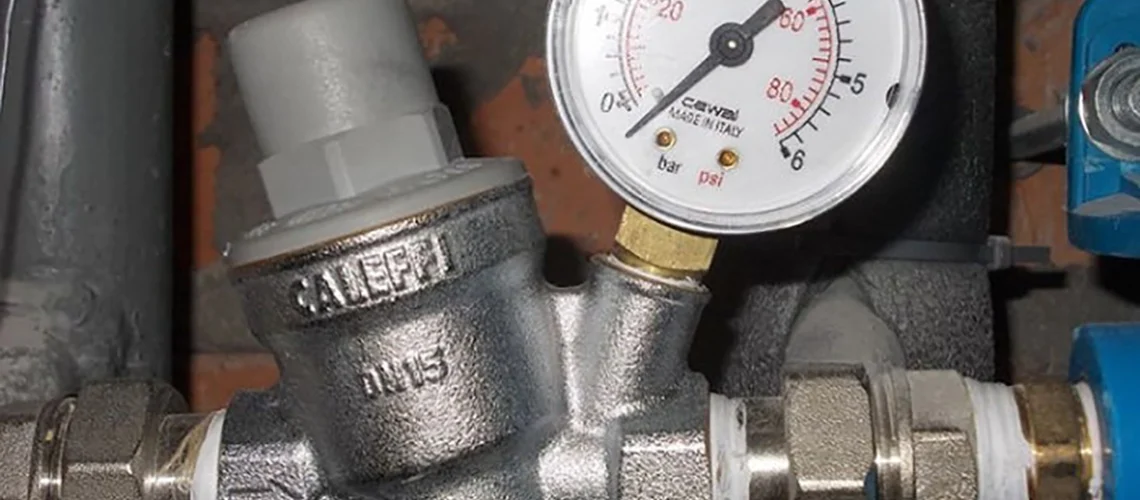A sudden drop in water pressure can be frustrating and often signals an underlying issue in your plumbing system. Whether you’re dealing with a pressure drop in the whole house or just a specific area, understanding what causes low water pressure can help you troubleshoot and restore lost water pressure quickly. Here’s a guide on what to check and how to fix low water pressure in your home.
Contents
- 1 Common Causes of Sudden Low Water Pressure
- 2 Quick Fixes for Low Water Pressure
- 3 Reasons for Water Pressure Decrease Related to Appliances
- 4 What Causes Low Water Pressure in Specific Situations
- 5 How to Fix Low Water Pressure Permanently
- 6 Water Pressure Restoration Tips to Avoid Future Problems
- 7 Conclusion
- 8 FAQ
Common Causes of Sudden Low Water Pressure
1. Blocked Pipes or Fixtures
One common cause of low water pressure in a home is a blockage somewhere in the plumbing. Mineral buildup, particularly in areas with hard water, can clog pipes over time, limiting water flow. This type of blockage is especially common in older homes.
- Check faucet aerators: If only one faucet is affected, remove and clean the aerator to see if that restores pressure.
- Inspect showerheads: Showerheads can also become clogged with mineral deposits, causing low water pressure in the shower.
2. Leaks in the Plumbing System
Leaks can be a significant reason for a sudden low water pressure in a house. When water escapes through a leak, less pressure reaches your faucets and fixtures.
- Look for damp areas: Inspect ceilings, walls, and under sinks for signs of leaks.
- Monitor your water meter: If the meter keeps moving when all water is off, you might have a leak.
Quick Fixes for Low Water Pressure
If you’re dealing with a minor issue, there are some quick fixes for low water pressure that may help improve flow.
1. Clean or Replace Clogged Fixtures
Sometimes, a simple cleaning or replacement of a fixture can help restore lost water pressure. Removing mineral deposits from faucet aerators or showerheads can significantly boost water flow.
2. Adjust the Pressure Regulator
In some homes, a pressure regulator controls the water pressure from the main line. If the water pressure in the home is low, try adjusting this regulator, or have a plumber check it for accuracy.
3. Check the Main Shut-Off Valve
Sometimes, the main shut-off valve might be partially closed, leading to a pressure drop. Make sure it is fully open to allow maximum water flow.
Reasons for Water Pressure Decrease Related to Appliances
1. Water Heater Pressure Problems
If you’re experiencing low water heater pressure, the issue may be isolated to your water heating system. Sediment buildup in the heater tank can reduce water flow, especially in older models.
- Flush the water heater: This can remove sediment and improve both water heater efficiency and pressure.
- Inspect the temperature and pressure relief valve: Ensure it’s not causing any leaks or pressure issues.
2. Clogged or Malfunctioning Water Filters
Water filters in your system are great for quality, but over time, they can become clogged and cause a pressure drop. Make sure to check filters regularly and replace them as necessary.
What Causes Low Water Pressure in Specific Situations
High Demand Periods
If your water pressure drops during peak hours (such as morning or evening), high demand could be to blame. This is common in neighborhoods with shared water supplies.
Seasonal Issues or Municipal Work
Occasionally, low water pressure may result from municipal water system maintenance. Seasonal changes like freezing temperatures can also affect pipes, leading to a sudden change in pressure.
How to Fix Low Water Pressure Permanently
If the above steps don’t help, there may be a more severe issue requiring professional assistance. A licensed plumber can diagnose and repair complex issues that might be causing low water pressure in the home. Here’s when to call a professional:
- Persistent low pressure: If you can’t pinpoint the issue yourself, professional tools can help locate the problem.
- Multiple leaks: A plumber can inspect and fix leaks to restore water pressure safely.
- Pipe replacement needs: If you have old or corroded pipes, replacing them can restore consistent water flow.
Water Pressure Restoration Tips to Avoid Future Problems
To maintain good water pressure, follow these simple tips:
- Regularly inspect fixtures and pipes: This can prevent small issues from developing into pressure problems.
- Flush your water heater annually: Reducing sediment buildup will keep the system working efficiently.
- Monitor for leaks: Early leak detection can save you from larger issues.
Conclusion
Dealing with a sudden low water pressure in your house can be inconvenient, but understanding what would cause water pressure to drop can help you fix it quickly. With these water pressure restoration tips, you can maintain a strong, steady water flow throughout your home. If troubleshooting doesn’t resolve the issue, don’t hesitate to consult a professional to ensure a long-term solution.
FAQ
Low water pressure can result from leaks, clogged pipes, issues with the pressure regulator, or municipal water supply problems.
Begin by checking for leaks, cleaning clogged aerators, and adjusting the pressure regulator. If these don’t help, consult a plumber for further diagnosis.
This might be due to a clogged aerator or a partially closed valve for that specific fixture. Cleaning or replacing the aerator often solves the issue.
Check all shut-off valves to ensure they’re fully open, clean aerators and showerheads, and adjust the main pressure regulator if needed.
Inspect all faucets and fixtures, check for visible leaks, clean any clogged aerators, and see if the pressure regulator needs adjustment.



